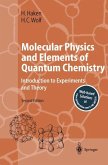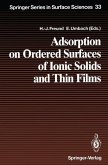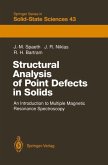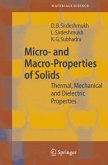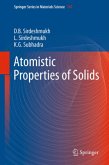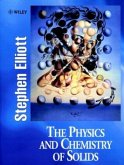Quantum Chemistry of Solids delivers a comprehensive account of the main features and possibilities of LCAO methods for the first principles calculations of electronic structure of periodic systems. The first part describes the basic theory underlying the LCAO methods applied to periodic systems and the use of Hartree-Fock(HF), Density Function theory(DFT) and hybrid Hamiltonians. The translation and site symmetry consideration is included to establish connection between k-space solid -state physics and real-space quantum chemistry. The inclusion of electron correlation effects for periodic systems is considered on the basis of localized crystalline orbitals. The possibilities of LCAO methods for chemical bonding analysis in periodic systems are discussed.
The second part deals with the applications of LCAO methods for calculations of bulk crystal properties, including magnetic ordering and crystal structure optimization. In the second edition two new chapters are added in the application part II of the book.
Chapter 12 deals with the recent LCAO calculations and illustrates the efficiency of the scalar-relativistic LCAO method for solids, containing heavy atoms. Chapter 13 deals with the symmetry properties and the recent applications of LCAO method to inorganic nanotubes.
New material is added to chapter 9 devoted to LCAO calculations of perfect-crystal properties. The possibilities of LCAO method for calculation of the high-frequency dielectric constants of crystals and the description of phase transitions in solids are discussed. The efficiency of LCAO method in the quantum-mechanics-molecular dynamics approach to the interpretation of x-ray absorption and EXAFS spectra is illustrated. A new section is devoted to recent LCAO calculations of electronic, vibrational and magnetic properties of tungstates MeWO4 (Me: Fe,Co,Ni,Cu,Zn,Cd).
The second part deals with the applications of LCAO methods for calculations of bulk crystal properties, including magnetic ordering and crystal structure optimization. In the second edition two new chapters are added in the application part II of the book.
Chapter 12 deals with the recent LCAO calculations and illustrates the efficiency of the scalar-relativistic LCAO method for solids, containing heavy atoms. Chapter 13 deals with the symmetry properties and the recent applications of LCAO method to inorganic nanotubes.
New material is added to chapter 9 devoted to LCAO calculations of perfect-crystal properties. The possibilities of LCAO method for calculation of the high-frequency dielectric constants of crystals and the description of phase transitions in solids are discussed. The efficiency of LCAO method in the quantum-mechanics-molecular dynamics approach to the interpretation of x-ray absorption and EXAFS spectra is illustrated. A new section is devoted to recent LCAO calculations of electronic, vibrational and magnetic properties of tungstates MeWO4 (Me: Fe,Co,Ni,Cu,Zn,Cd).
"Quantum chemistry of solids is a comparatively new branch of chemical physics developed at the border line between molecular quantum chemistry and solid state theory. Combination of experience developed in the quantum mechanics of molecules and translational symmetry typical for crystalline structures allows one to reach a new level of knowledge about advanced materials. This approach is typically based on a basis set of linear combination of atomic orbitals (LCAO) and hence permits a detailed analysis of the chemical bonding between atoms in solids-unlike traditional basis set of plane waves commonly used in the band structure calculations. The author of the book under concern, Robert Evarestov, is one of pioneers in this new interdisciplinary area. Symmetry aspects of crystals and surfaces and their application to the two basic approaches used in first principles calculations of the atomic and electronic structure of solids -Hartree-Fock (HF) method and Density Functional Theory (DFT), as well as their hybrids, are discussed in detail in the first part of the book. The discussion of the cyclic models of solids which connect the molecular (cluster) models and periodic models taking into account translational symmetry of crystals is on advanced but nevertheless didactically very skillful level. The results on symmetry of nanotubes and line-groups in one-periodic systems refer to the present edge of materials science. The second part of the book contains numerous illustrations of the calculations of the electronic, magnetic and vibrational properties of crystals. Special attention is paid to a study of defects in solids. A new chapter was added in the second edition of the book dealing with the calculations of compounds with heavy elements, e.g. uranium nitride, based on use of the relativistic pseudopotentials. The book offers an excellent choice of topics and sets out the fundamental issue very clearly. In every sentence it proves that the author is both a brilliant scientist and brilliant lecturer. The book is highly recommended for both students and experienced researchers working in solid state physics and chemistry as well as in the materials science area." (Prof. Dr J. Maier and Dr E. Kotomin, Max Planck Institute for Solid State Research, Stuttgart, Germany, July 17, 2013)



